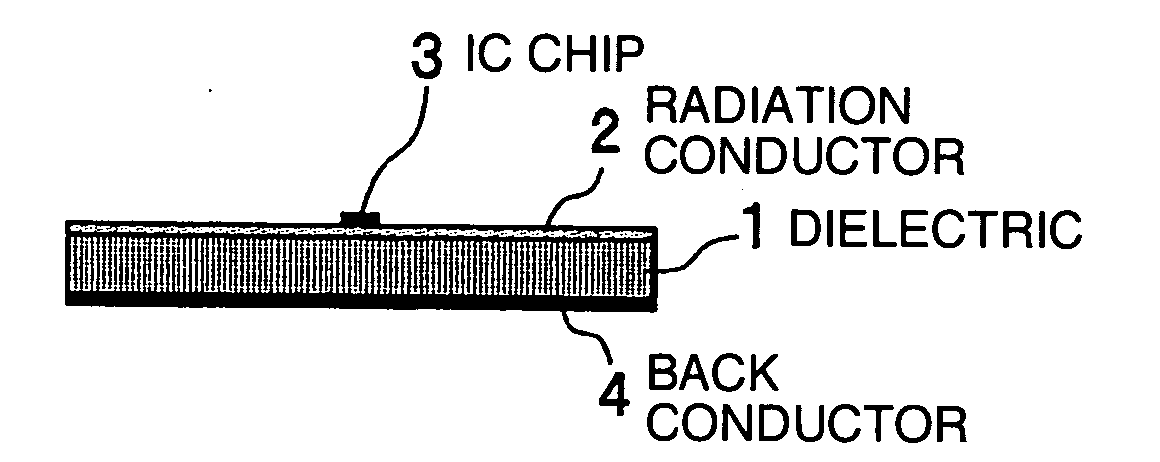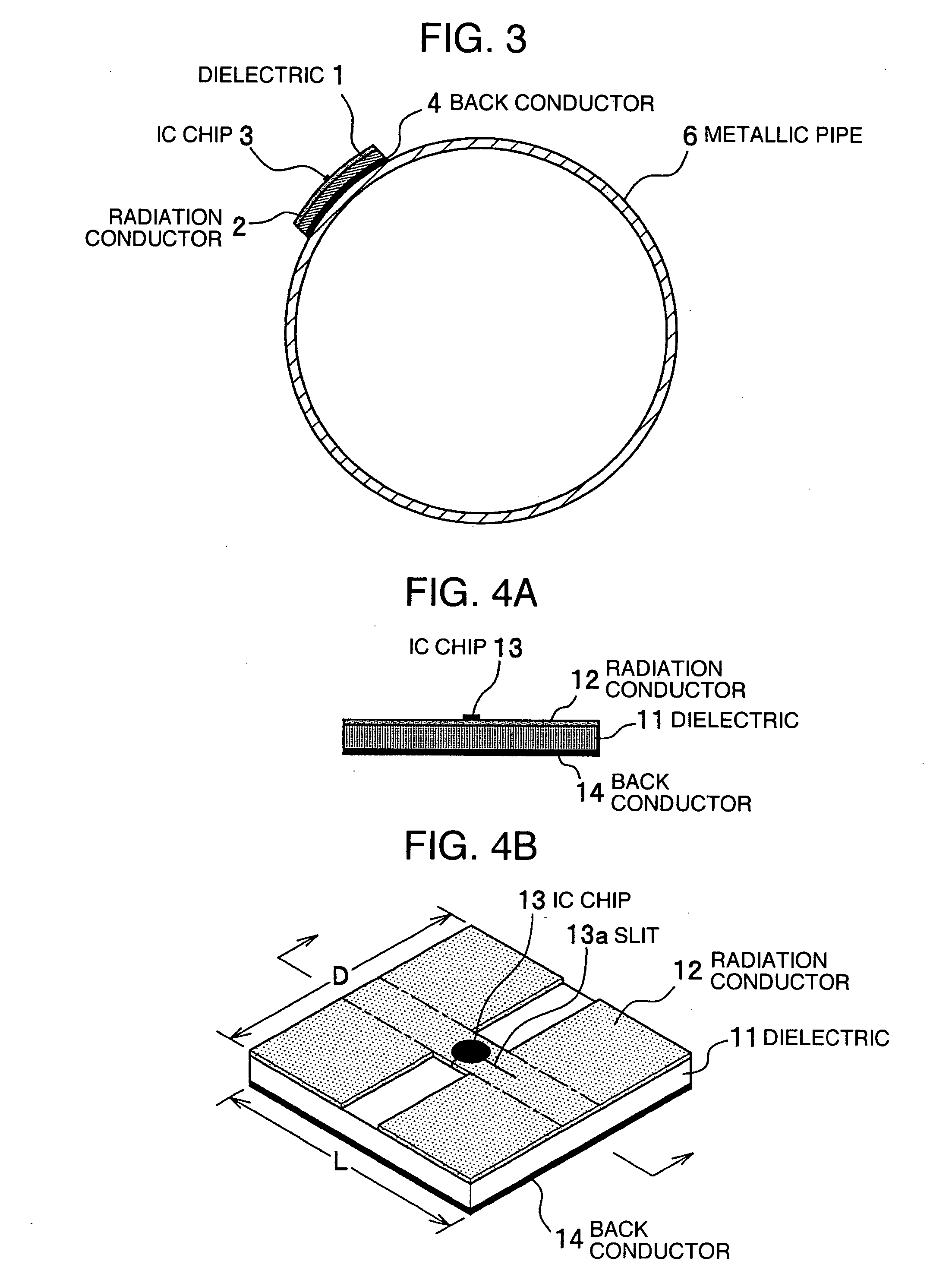Radio frequency identification tag with improved directivity and coverage distance stability
a radio frequency identification and directivity technology, applied in the field of radio frequency identification tags, can solve the problems of remarkable drop in coverage distance or communication distance, inability to communicate in some cases, etc., and achieve the effect of wide directivity, free from the drop of communication distance, and rich flexibility
- Summary
- Abstract
- Description
- Claims
- Application Information
AI Technical Summary
Benefits of technology
Problems solved by technology
Method used
Image
Examples
first embodiment
[0036]FIGS. 1A and 1B show a micro-strip antenna of a radio wave IC tag according to the first embodiment of the invention. FIG. 1A is a sectional view and FIG. 1B is a perspective view. A radiation conductor 2 is formed on the entire front surface of a dielectric 1 and a back conductor 4 is formed on the entire back surface of the dielectric 1. An IC chip 3 is mounted to a position deviated from the center of the radiation conductor 2 on the front surface side. An L-shaped slit 3a is formed at the portion of the radiation conductor 2 at which the IC chip 3 is mounted. One of the ends of the slit 3a extends to one of the ends of the radiation conductor 2 as shown in the drawing. Each bonding pad (not shown in the drawing) of the IC chip 3 is connected to the radiation conductor 2 on both sides of the slit 3a in such a fashion as to bridging the slit 3a. This slit 3a is formed to prevent dielectric breakdown and to establish impedance matching.
[0037] The dielectric 1 sandwiched betw...
second embodiment
[0045]FIGS. 4A and 4B show a micro-strip antenna of a radio wave IC tag according to the second embodiment of the invention. FIG. 4A is a sectional view and FIG. 4B is a perspective view. An H-shaped radiation conductor 12 is formed on the entire surface of a dielectric 11 and a back conductor 14 is formed on the entire back surface of the dielectric 11. An IC chip 13 is mounted to a contraction (narrowed) portion of the H-shaped radiation conductor 12 on the front surface side. Incidentally, an L-shaped slit 13a is formed at the contraction portion of the radiation conductor 12 to which the IC chip 13 is mounted. The slit 13a is for preventing dielectric breakdown and for establishing impedance matching in the same way as in the first embodiment.
[0046] The H-shaped radiation conductor 12 formed on the front surface of the dielectric 11 operates as a micro-strip antenna in cooperation with the back conductor 14 that is formed on the entire back surface of the dielectric 11. Since t...
third embodiment
[0049] A round IC tag will be explained in the third embodiment. To have the explanation more easily understood, the round radio wave IC tag of the third embodiment will be explained in comparison with a radio wave IC tag of the Comparative Example. FIGS. 5A to 5D are structural views of round radio frequency IC tags according to Comparative Example and to the third embodiment of the invention, wherein FIG. 5A is a sectional view of the radio frequency IC tag of Comparative Example, FIG. 5B is a perspective view of the radio frequency IC tag of Comparative Example, FIG. 5C is a sectional view of the radio frequency IC tag of the third embodiment and FIG. 5D is a perspective view of the radio frequency IC tag of the third embodiment, respectively.
[0050] To let the radio frequency IC tag of Comparative Example operate as the micro-strip antenna, a round H-shaped radiation conductor 132a is formed at the center of a disk-like dielectric 131a having a large area as shown in FIGS. 5A an...
PUM
 Login to View More
Login to View More Abstract
Description
Claims
Application Information
 Login to View More
Login to View More - R&D
- Intellectual Property
- Life Sciences
- Materials
- Tech Scout
- Unparalleled Data Quality
- Higher Quality Content
- 60% Fewer Hallucinations
Browse by: Latest US Patents, China's latest patents, Technical Efficacy Thesaurus, Application Domain, Technology Topic, Popular Technical Reports.
© 2025 PatSnap. All rights reserved.Legal|Privacy policy|Modern Slavery Act Transparency Statement|Sitemap|About US| Contact US: help@patsnap.com



